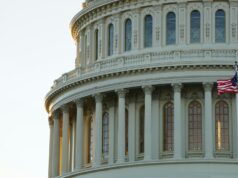Term limits spark passionate debates in American politics. While presidents face a two-term cap, members of Congress can serve indefinitely. Senators and representatives may hold power for decades if they keep winning reelection. The absence of term limits raises questions about democracy, accountability, and entrenched political power.
In this article, you will learn why Congress does not have term limits, the constitutional history behind this choice, arguments for and against restrictions, and the ongoing debate about reform.
The Founders’ Vision
The U.S. Constitution does not include term limits for Congress. Instead, it establishes age, citizenship, and residency requirements. Beyond that, voters decide how long representatives and senators stay in office.
The framers debated rotation in office, but most rejected it. In the Federalist Papers, Alexander Hamilton and James Madison argued stability was vital for governance. They believed frequent turnover could weaken institutional knowledge and reduce effectiveness in foreign and domestic affairs.
George Washington’s precedent of voluntarily leaving office after two presidential terms set a cultural standard, later codified into law with the 22nd Amendment. But Congress was intentionally left without such restrictions.
Supreme Court Rulings on Term Limits
In 1995, the Supreme Court decided U.S. Term Limits v. Thornton. Arkansas attempted to impose term limits on its congressional delegation, but the Court struck it down. The ruling held that only a constitutional amendment could create term limits for Congress.
This decision closed the door on individual states setting their own restrictions. It made clear that the Constitution is the only path forward.
Arguments Against Term Limits
Critics of term limits stress the importance of voter choice. If the electorate wants to reelect an experienced lawmaker, they argue, democracy should allow it.
Other reasons often cited include:
- Institutional memory: Long-serving members understand legislative processes better.
- Policy depth: Experience helps navigate complex issues like budgets, defense, and treaties.
- Checks and balances: Term limits could weaken Congress against the executive branch.
Opponents also warn that forced turnover might empower unelected staff, bureaucrats, and lobbyists, who face no such limits.
Arguments For Term Limits
Supporters see term limits as a way to break political stagnation. They argue entrenched incumbents become disconnected from constituents and too reliant on special interests.
Key arguments include:
- Accountability: Limits prevent “career politicians” from dominating.
- Fresh ideas: New lawmakers bring diverse perspectives.
- Reduced corruption: Shorter service reduces temptation to build long-term ties with lobbyists.
Public opinion polls often show strong support. Surveys suggest around 75% of Americans favor congressional term limits.
The Constitutional Challenge
Adding term limits requires amending the Constitution. This is a steep climb. An amendment needs approval by two-thirds of both chambers of Congress and ratification by three-fourths of the states.
Since members of Congress would be voting to restrict their own power, few see incentive in supporting such a measure.
Another possible route is an Article V convention, where states propose amendments directly. This method is rarely used and carries uncertainty about scope and outcomes.
Why Presidents Face Limits, But Congress Does Not
Presidential term limits came after Franklin D. Roosevelt won four elections. Many feared the concentration of power in one leader. The 22nd Amendment was passed in 1951 to ensure no president could serve longer than two terms.
Congress, however, was viewed differently. With staggered elections every two years for the House and every six years for the Senate, the framers believed voters already had natural checks in place.
Incumbency Advantage
A major reason term limits resurface in debates is the incumbency advantage. Data shows incumbents have high reelection rates.
This advantage comes from:
- Name recognition
- Fundraising networks
- Districting practices (including gerrymandering)
- Constituent services
In practice, this means some lawmakers remain in office for decades. Examples include senators serving over 40 years.
State-Level Term Limits
Many states do enforce limits for governors and legislators. These experiments provide insight into potential federal reforms.
Supporters highlight that state term limits open doors for younger politicians and fresh leadership. Critics argue that frequent turnover creates legislative inexperience and shifts power to lobbyists and bureaucrats.
Modern Reform Efforts
Groups like U.S. Term Limits continue to push for change. Their campaigns advocate for an Article V convention to propose term limits on Congress.
Several states have passed resolutions supporting the idea. Yet, the process remains slow and uncertain. Congress itself shows little appetite for voluntarily limiting its tenure.
Deeper Look at Term Limits in Congress
Historical Pushes for Term Limits
The idea of limiting congressional service is not new. During the 1990s, several states passed laws attempting to restrict the number of terms their federal representatives could serve. These efforts were part of a broader political movement often tied to anti-establishment sentiments.
The 1994 “Contract with America,” championed by House Republicans, included a proposal for term limits. It reflected public frustration with entrenched lawmakers. However, the proposals stalled in Congress, illustrating the difficulty of persuading members to impose restrictions on themselves.
The Role of Lobbying and Money
Lobbying plays a central role in the debate. Long-serving members often develop deep relationships with lobbyists and donors. Critics argue that these relationships create an uneven playing field for challengers.
Fresh candidates often lack access to such fundraising networks. This makes campaigns expensive and discourages competition. Term limits, supporters claim, would reset the field by opening opportunities for newcomers.
Career Politicians vs Citizen Legislators
The U.S. Congress was never envisioned as a place for lifetime careers. The idea of the “citizen legislator” was central to the founders’ philosophy. Public service was meant to be temporary, not permanent.
Yet, modern politics has drifted from that vision. Many lawmakers build entire careers in Washington. This careerism contributes to public distrust and feeds arguments for term limits.
Political Polarization and Term Limits
The rise of polarization adds another layer. Critics say term limits could ease gridlock by preventing long-term entrenchment of partisan leaders. Newer members might bring willingness to negotiate.
However, opponents counter that inexperienced lawmakers may lack the skills needed to broker compromises. Instead of reducing polarization, term limits could worsen it by creating cycles of ideological newcomers without governing experience.
International Comparisons
Looking abroad, most democratic legislatures do not impose strict term limits on lawmakers. Parliamentary systems, such as those in the UK or Canada, allow politicians to serve indefinitely if reelected.
By contrast, some presidential systems, like Mexico, restrict legislators to one term. These strict rules often produce turnover but also weaken legislative expertise. The U.S. falls closer to the international norm of open-ended service.
The Challenge of Constitutional Reform
Even if public opinion strongly favors limits, the pathway remains difficult. Amending the Constitution is intentionally challenging. Out of over 11,000 proposed amendments since 1789, only 27 have been adopted.
For term limits, this means navigating both political self-interest and deep constitutional hurdles. The last major amendment, reducing the voting age to 18, succeeded in 1971 during the Vietnam War—a time of intense national pressure. Term limits lack such a unifying crisis to push them forward.
Public Opinion Trends
Surveys consistently show strong support for term limits, across party lines. Polling from Gallup and Pew Research highlights bipartisan frustration with incumbency.
This frustration is rooted in distrust. Approval ratings for Congress often hover below 25%. Despite this, individual members frequently win reelection. This paradox fuels calls for reform, as people often criticize Congress as a whole but reelect their own representatives.
Influence of Gerrymandering
Another factor that complicates the issue is redistricting. Gerrymandered districts can shield incumbents from competitive challenges. Term limits could reduce this insulation by guaranteeing turnover, regardless of district shape.
Without reform, however, gerrymandering strengthens the incumbency advantage. This explains why many reform advocates pair term-limit campaigns with calls for independent redistricting commissions.
Potential Alternatives to Term Limits
Some suggest alternatives instead of direct limits. Campaign finance reform, stricter lobbying regulations, and independent redistricting could reduce entrenched power without constitutional changes.
Others propose age or service-based retirement rules. These would not be strict term limits but could ensure leadership renewal. Such alternatives may be more achievable than a constitutional amendment.
Term Limits and Committee Power
Congressional committees play a central role in shaping legislation. Seniority often determines who chairs them. This creates powerful lawmakers who hold sway for decades.
Supporters of term limits argue this system creates bottlenecks. By rotating membership more often, power would be shared more broadly. Critics respond that constant turnover could harm committee effectiveness and weaken oversight.
The Role of State Legislatures
States with legislative term limits provide real-world examples. Studies show mixed results. In some states, limits increased diversity in legislatures and created more competitive elections.
In others, turnover led to inexperienced lawmakers relying more heavily on staff and lobbyists. The lessons from state-level term limits are often cited in national debates, though the federal scale presents unique challenges.
The Future of the Movement
Despite setbacks, the term limits movement remains active. Grassroots organizations continue to push state legislatures to pass resolutions for an Article V convention.
Momentum grows slowly, but supporters believe sustained public pressure could eventually force the issue. Opponents argue energy is better spent on electoral reforms that do not require constitutional change.
Impact on Policy Outcomes
One of the biggest questions is whether term limits would improve policy outcomes. Supporters claim new lawmakers would be closer to constituents and less tied to Washington elites.
However, research shows mixed results from state experiments. Some policy areas suffered from lack of experience, while others benefited from fresh energy and perspectives. The federal outcome remains uncertain.
Conclusion
The absence of congressional term limits reflects constitutional design, Supreme Court precedent, and political self-interest. While voters may support limits, the legal and structural hurdles are steep. The debate persists because it cuts to the core of democratic accountability—how long should one person hold power in a system designed for the people?
Until a constitutional amendment succeeds, Congress will remain free of term limits, leaving the ballot box as the only check on incumbents.














